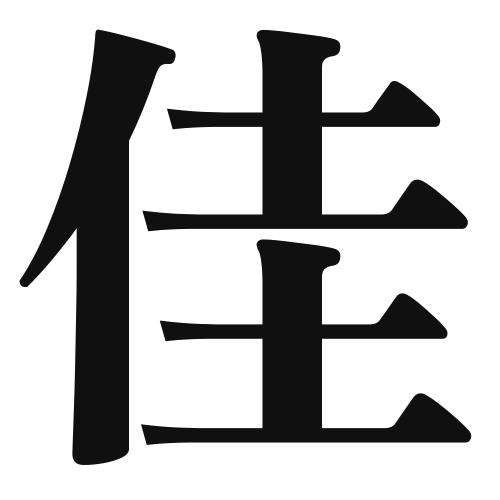1. Overview of Meaning
The kanji “佳” (ka) means “good,” “excellent,” or “beautiful.” It is often used to describe something that is pleasing or of high quality.
2. Formation and Radical
Formation of the Kanji: The kanji “佳” is a phonetic-ideographic character (形声文字). It combines the meaning of “good” with phonetic elements to convey its pronunciation.
Radical: The radical for “佳” is “佳” itself, which is also a standalone character.
3. Examples of Usage
Common Words and Phrases: Some frequently used words that include “佳” are “佳作” (kasaku – excellent work) and “佳人” (kajin – beautiful person).
Example Sentences in Daily Conversation:
- この映画は本当に佳作だと思います。 (I think this movie is truly an excellent work.)
- 彼女は佳人ですね。 (She is a beautiful person.)
4. Synonyms and Antonyms
Similar Kanji: A similar kanji is “良” (ryou), which also means “good,” but it is more commonly used in everyday contexts, while “佳” has a more refined connotation.
Antonyms: The antonym of “佳” is “悪” (aku), which means “bad” or “evil.”
5. Cultural and Historical Background
Relation to Japanese Culture: The kanji “佳” is often associated with beauty and excellence in various aspects of Japanese culture, including art and literature.
Proverbs and Idioms: One common saying is “佳人薄命” (kajin hakumei), which translates to “beautiful people have short lives,” reflecting a cultural belief about the fleeting nature of beauty.
